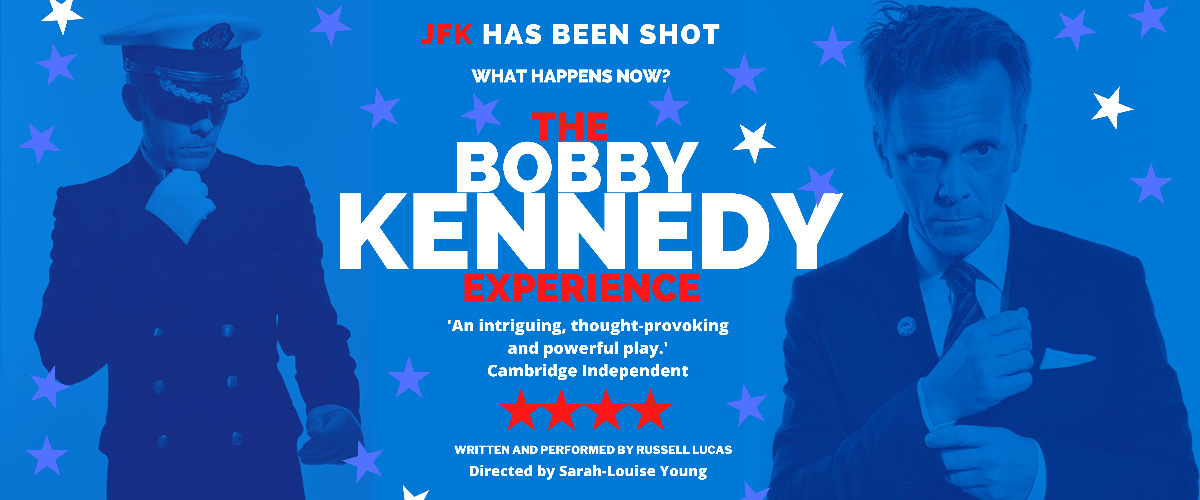 The National Geographic documentary JFK: Seven Days that Made a President was made in London in 2013. Russell Lucas was cast as the president’s younger brother Bobby, but it wasn’t his introduction to the Kennedys.
The National Geographic documentary JFK: Seven Days that Made a President was made in London in 2013. Russell Lucas was cast as the president’s younger brother Bobby, but it wasn’t his introduction to the Kennedys.
“When I was 12, I used to watch a lot of soap operas with my mom, Dynasty, Dallas, The Colbys, East Enders, you name it…” Lucas recalled. “One day she was watching something called ‘Kennedy’ which was about JFK. I watched and thought it was a soap opera and found out years later it was absolutely true. I remember my mom saying to me, ‘His younger brother was also assassinated,’ and I remember thinking, ‘What?! His younger brother was also assassinated, how did that work out?’”
In a converted courthouse in Clapham, Lucas-as-Bobby was filmed persuading a cameraman to get close to Richard Nixon’s sweating face during the presidential debate and making calls to help have Martin Luther King Jr. released from prison. He convinced a film company to release Marilyn Monroe to perform at Madison Square Garden, and endured the aftermath of his brother’s murder.
The shooting schedule of Seven Days is described in the opening moments of Lucas’ The Bobby Kennedy Experience, a one-man matryoshka doll dissecting the medium of theatre and the dissemination of myth in the media age. Stitched together like a needlepoint reproduction of a Jackson Pollock, every word and gesture is carefully considered as a politician’s pictorial in an old issue of LIFE magazine. It packs quite a punch.
Robert Kennedy was the idealistic son of a ruthless capitalist and the brother of a president, the US attorney general and then a senator who was killed during his own presidential campaign, two months after the assassination of Martin Luther King. The latest collaboration between Lucas and Sarah Louise Young (the co-creators of An Evening Without Kate Bush) it’s a phantasmagoric passage through a traumatic American decade; a history lesson and a 21st century theatre presentation about a Shakespearean drama.
The role of the audience shifts along with the piece while Lucas conjures up pieces of American history like a magician, with flags and balloons. In a tour-de-force performance he channels a devoted father, sedulous candidate, and a brother destroyed by grief. Inspired by RFK’s inclusive populism—”He said we’re going to have to start recycling our waste and using renewable energy in 1964”—the piece was created for Kennedy obsessives and people who have never heard of RFK, “the best president America never had.”
“If he ever found out that he was wrong,” Lucas said. “He would admit that he was wrong. And by Jove, I wish we had that these days.”
The Bobby Kennedy Experience opened at The Town & Gown Pub and Theatre in Cambridge on April 23rd 2022.
The Bobby Kennedy Experience is in London from November 4-6, 2022: https://greenwichtheatre.org.uk/events/the-bobby-kennedy-experience/

 Grant K of Yenda, Australia objects to the “no pictures” policy at the Prado. Here is his 2021 response to Stephanie’s question on Trip Advisor.com, “Can I take photos at the Prado?”:
Grant K of Yenda, Australia objects to the “no pictures” policy at the Prado. Here is his 2021 response to Stephanie’s question on Trip Advisor.com, “Can I take photos at the Prado?”:

